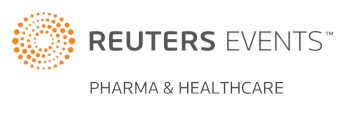Featured Opinions
Data Ownership Is Having Its Moment
Every healthcare stakeholder wins when personal data becomes personal property
In Search of Pharma’s Moore’s Law
Will AI usher in a new era of high productivity for clinical trials?
The Highs and Lows of Healthcare
by Jill Donahue
For Doug Noland from Astellas, patient-centricity is personal, having seen the best and worse of healthcare in his own life
First, We Need To Talk: Mental Healthcare In The MENA Region
by Marc Yates
To tackle the considerable mental health challenges in the Middle East and North Africa, companies need to work from the bottom up
Becoming the #1 Partner to Patient Groups
by Jill Donahue
Focus on improving patient outcomes – not your reputation – to create win-win partnerships with patient organizations
Where Next For Digital Support Programs?
‘Beyond the pill’ patient support services are set to become a key differentiator for pharma companies, but a new approach is needed
Data Analytics: The New Gold Standard In Drug Value
Data analytics is moving from a nice-to-have add-on to a foundation of strategic thinking
Good Intentions, Bad Habits: Reforming Mental Healthcare In LatAm
by Marc Yates
Mental health reforms across Latin America are transforming attitudes and services but what can pharma do to help speed up the transition?
Helping Patients Learn Healthy Habits
Building for lasting behavior change with a patient-centric, research-driven approach to health innovation
Drug repurposing could help drive orphan drug access if pharma can accept the risks
Why Pharma Needs to Understand Population Health
by Rita Numerof
In the new health ecosystem, pharma needs to know a lot more about population health
Out of the Shadows: Mental Health in Asia Pacific
by Marc Yates
Asia Pacific is the third largest market for mental health medicines but there are substantial obstacles to overcome before pharma – and patients – can reap the benefits
PSPs: Avoiding the Pitfalls, Part 2
Patient support programs are fast becoming ‘cost of entry’ for new drugs and the pressure to deliver differentiated services with measurable results is building across the industry
Innovation, Sustainability, Prosperity: Japan’s Healthcare Vision
by Marc Yates
Japan is looking to its young people to find solutions to its healthcare challenges
The Pharma Business Model: How to Avoid the Innovator's Dilemma
Pharma needs to adopt the business models of tech companies if it is to flourish
ePROs: Why We Should Be Mobile-First
Capturing electronic patient-reported outcomes via a mobile device is a growing trend but you need to think mobile-first
Delivering effective patient support programs (PSPs) is rapidly becoming an essential component of patient access but there are many pitfalls to avoid
Living with NASH: An Unexpected Diagnosis
With no current licensed treatments, the liver disease NASH represents a huge opportunity for pharma – if it understands patient needs
Don’t Just Digitize. Embrace Digitalization
Digitizing an analogue process may deliver benefits but only a radical rethink will bring true success
6 Strategies for a Value-Based World
by Mark Feeney
The shift from volume to value is forcing a rethink of pharma fundamentals. Here are six areas to focus on
Ageing Asia: What Does the Future Hold?
by Marc Yates
Growing elderly populations across Asia are putting strain on healthcare systems and budgets but opportunities abound for innovative pharma companies
The Patient Journey: A Tool for Market Access?
A greater understanding of the patient journey is rapidly becoming an essential tool for market access
Navigating South Korea’s Healthcare Paradox
by Marc Yates
South Korea is a land of extremes and contradictions, yet there are many opportunities for pharma
How industry is coming together to speed up clinical trials
The Role of Post-Market Studies in Market Access
by Rita Numerof
Post-market studies are critical in responding to the increasing demand for data on economic and clinical value
























